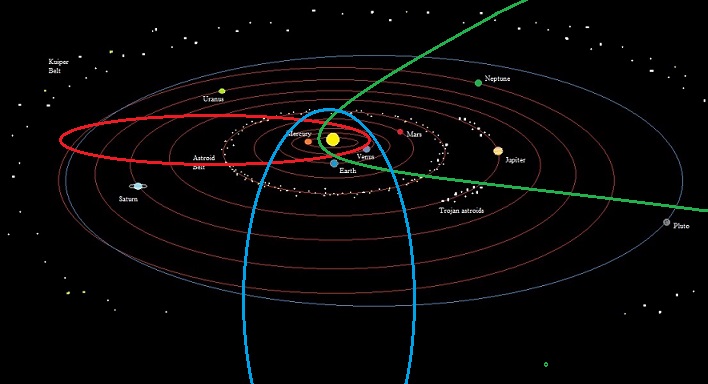
| Planet: | Distance to Sun (AU): | Mass: | No of Moons: | Type: | Avg. Orbital velocity (km/s): |
| Mercury | 0.4 | 0.055 | zero | Rocky | 47.4 |
| Venus | 0.7 | 0.81 | zero | Rocky | 35.0 |
| Earth | 1 | 1 | 1 | Rocky | 29.8 |
| Mars | 1.5 | 0.107 | 2 | Rocky | 24.1 |
| Jupiter | 5.2 | 318 | 79 up to now | Gas giant: iron-nickel core, H, He outer layers | 13.1 |
| Saturn | 9.5 | 95 | 82 up to now | Gas giant: iron-nickel core, H, He outer layers | 9.7 |
| Uranus | 19.2 | 14 | 27 up to now | iron-nickel core, methane +other stuff outer layer | 6.8 |
| Neptune | 30.1 | 17 | 14 up to now | iron-nickel core, methane + other stuff outer layer | 5.4 |

